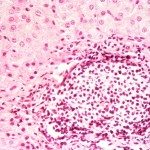Link to Pubmed [PMID] – 28240311
Sci Rep 2017 Feb;7:43462
For each influenza virus genome segment, the coding sequence is flanked by non-coding (NC) regions comprising shared, conserved sequences and specific, non-conserved sequences. The latter and adjacent parts of the coding sequence are involved in genome packaging, but the precise role of the non-conserved NC sequences is still unclear. The aim of this study is to better understand the role of the non-conserved non-coding sequences in the incorporation of the viral segments into virions. The NA-segment NC sequences were systematically replaced by those of the seven other segments. Recombinant viruses harbouring two segments with identical NC sequences were successfully rescued. Virus growth kinetics and serial passages were performed, and incorporation of the viral segments was tested by real-time RT-PCR. An initial virus growth deficiency correlated to a specific defect in NA segment incorporation. Upon serial passages, growth properties were restored. Sequencing revealed that the replacing 5’NC sequence length drove the type of mutations obtained. With sequences longer than the original, point mutations in the coding region with or without substitutions in the 3’NC region were detected. With shorter sequences, insertions were observed in the 5’NC region. Restoration of viral fitness was linked to restoration of the NA segment incorporation.

